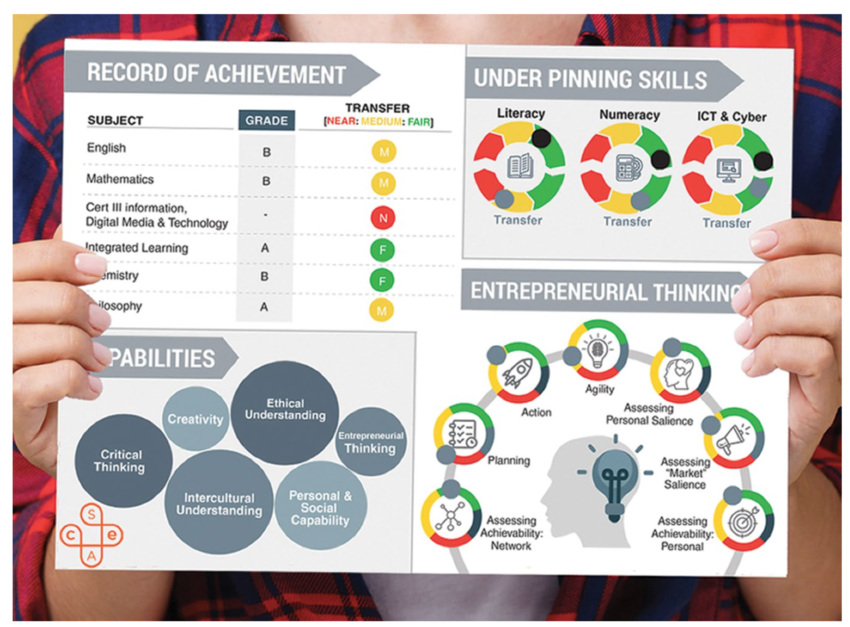
Beyond ATAR: A proposal for change
The Big Picture Graduation Portfolio is a ready-made solution to the increasing numbers of secondary students who are forgoing the traditional ATAR route and either obtaining direct entry to tertiary education or entering via other pathways. Currently 27% of university entries are through ATAR. And for those students who remain active in school, disengagement is at least 40%, according to the Grattan Institute (2017). The ATAR is mostly a non-predictive indicator of success after secondary school. Students, their parents and carers, business, universities and the general public are searching for modern approaches to promote and assess future-focused learning skills and to prepare our next generation for success in this dynamic, interconnected world.
Here at Big Picture we were pleased to see the release of the new report from the All Learning Lectures - “Beyond ATAR - A proposal for change”
http://www.all-learning.org.au/sites/default/files/resources/beyond_atar_proposal_for_change_all.pdf
We’re proud that Big Picture is highlighted as one of the current initiatives in Australia already providing innovative solutions to the issues outlined in the report.
In fact, The Big Picture Graduation Portfolio, our rigorous post-school pathway, is already well “beyond ATAR”.
The key findings and recommendations from the report were:
- That the age 15-19 stage of education, from Year 10 to the first-year post school, is re-cast as a specific developmental phase of education in which young people are supported to develop knowledge, skills and capabilities within various domains.
- That a Learner Profile is designed to provide a trusted, common way of representing the full range of attainments of young people during their transition years (within school and beyond) across a broad range of domains.
- That tertiary education providers adopt broader, more transparent entry criteria, design entry pathways and update their admissions processes to better align candidates’ interests, capabilities and aspirations with the educational opportunities on offer, and better reflect evidence about the progress and potential of learners.
The report findings are welcomed, but unsurprising. Big Picture has been working on these issues for over a decade. Schools and Academies using the Big Picture design for learning have been at the forefront of providing a richer, more engaging and personalised approach to learning and assessment. Their work has provided much of the evidence for the new report.
The ATAR is a queuing mechanism for universities to easily cut off when their numbers are full in a course. It is crude, but it is not unfair. Certainly, how it is generated has been a mystery to most.
The ATAR is losing it’s relevance, with a myriad of ways to access a degree without ATAR already. As the report states, the number of students entering university without an ATAR has risen from 66% to 75%.
“The Big Picture Education design is the most progressive approach to personalising schooling in the world,” Pro Vice-Chancellor Professor John Fischetti
At Big Picture Education we have already progressed with an alternative pathway to university, vocational education, career, or life - because we had to!
At the 40 Big Picture Schools and campuses around Australia students are:
- Working with Advisory Teachers to develop personalised learning plans
- Learning through rich enquiry based passion projects
- Getting out into the community to learn from mentors on internships
- Demonstrating their learning at public exhibitions for their assessment
- Creating lengthy and detailed portfolios of their work throughout senior High School
- Mapping back against curriculum outcomes
The learning is undeniable, but it doesn’t necessarily fit one-size-fits-all exams, and it’s incompatible with the complex scaling algorithms of the Universities Admissions Centre.
So we developed another way: The Big Picture Graduation Portfolio.
Since 2017, Big Picture students have been entering universities around Australia via this rigorous pathway that recognises the highly personalised learning journey of each student. A process that encourages and rewards students to get better-at learning, not better-than their peers.
Universities nationally and internationally are keenly working with us on this standardised portfolio entry process and 15 have already signed to our portfolio entry pathway.
We’re currently working with Dr Sandra Milligan, Director and Enterprise Professor, Assessment Research Centre, University of Melbourne (Working Group Chair of this report), to create microcredentials to build the kind of learning profile championed by “Beyond the ATAR - A proposal for change”.
We welcome the findings of this new report, it’s a wake up call to reform a system that restricts our young people at one of their most critical life moments.
Big Picture and Big Picture Schools have been pioneering this work for years and it’s heartening to see the work of our school communities celebrated as the way forward for all.
